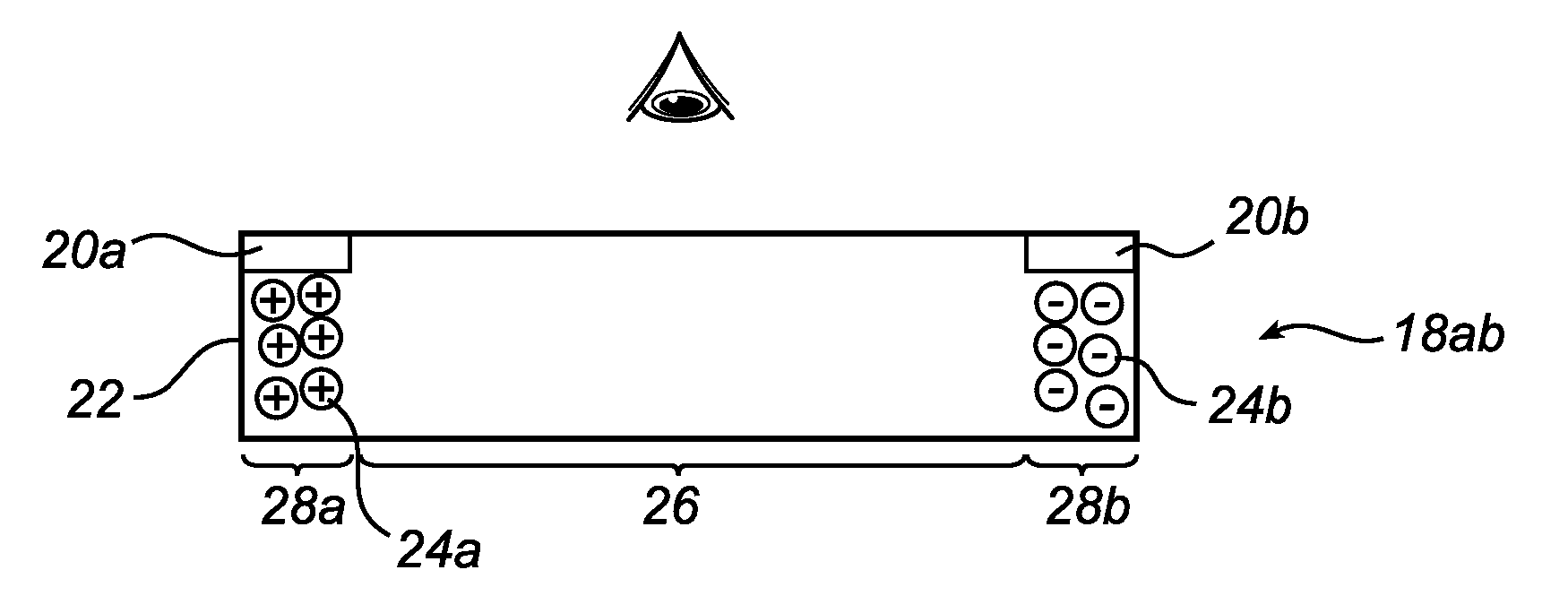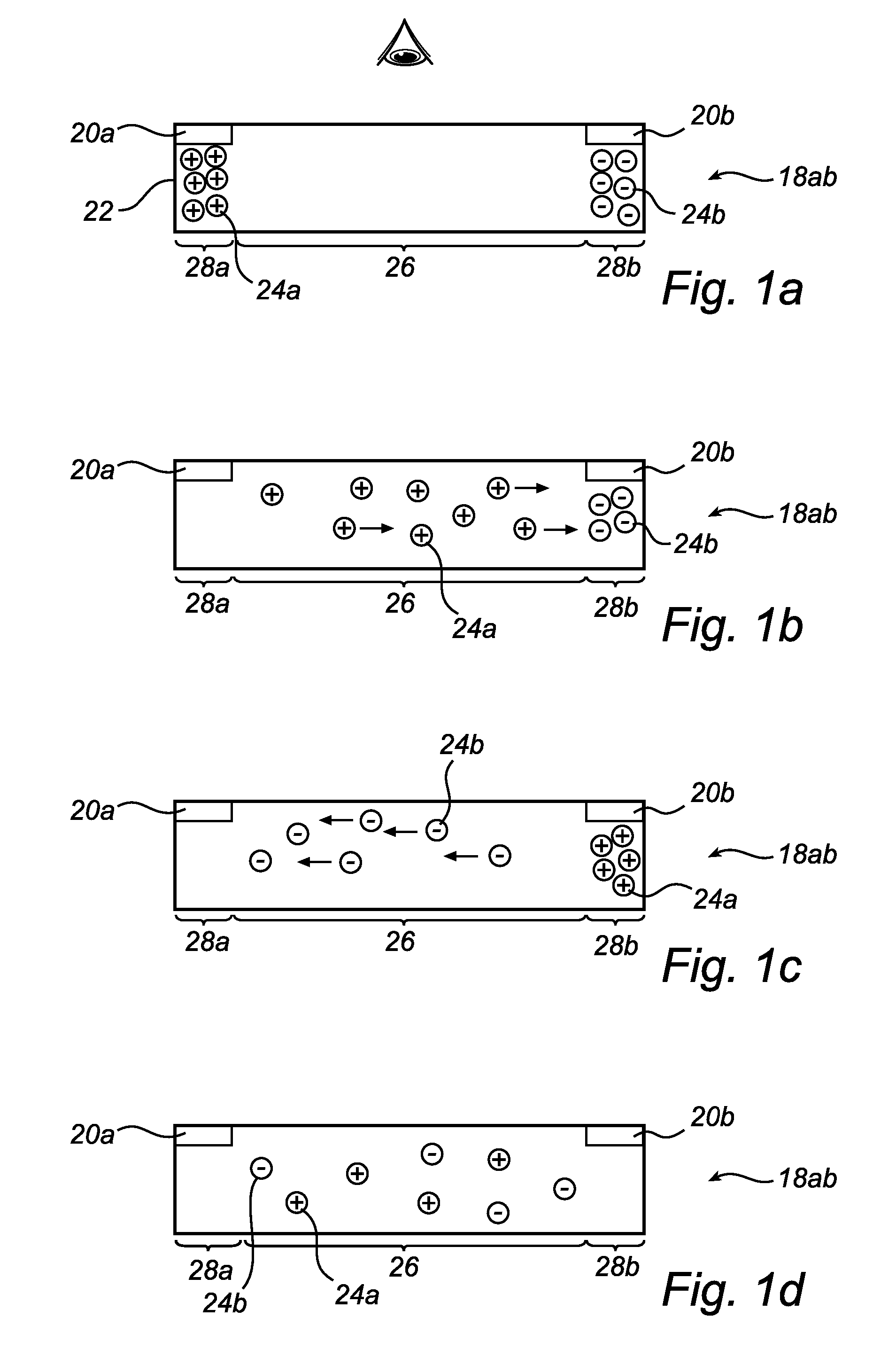In-plane switching electrophoretic colour display
a colour display and in-plane switching technology, applied in the field of electrophoretic color display panels, can solve the problems of difficult to achieve the controllability of the distribution of different sets of charged particles in such an arrangement, and achieve the effect of improving electrophoreti
- Summary
- Abstract
- Description
- Claims
- Application Information
AI Technical Summary
Benefits of technology
Problems solved by technology
Method used
Image
Examples
Embodiment Construction
[0024]Referring to the drawings and to FIG. 1a-1d in particular, there is depicted a layer cavity 18ab for use in a color subtractive electrophoretic display according to an embodiment of the present invention. In FIG. 1, the layer cavity 18ab comprises two addressable control electrodes 20a and 20b. The electrodes 20a and 20b are preferably placed at opposite corners of the layer cavity 18ab, in collector areas 28a, 28b, outside of the viewing area 26 of the pixel 10. Alternatively, they can be placed along opposite side walls 22 of the layer cavity 18ab. The suspension of layer cavity 18ab further comprises two different sets of charged particles 24a and 24b, which except for color (e.g. optical property) differ in at least one other control property. In this example, one set of particles comprise cyan particles 24a having a positive charge and high mobility, while the other set of particles comprise yellow particles 24b having a negative charge and low mobility. By appropriately ...
PUM
| Property | Measurement | Unit |
|---|---|---|
| angle | aaaaa | aaaaa |
| optical property | aaaaa | aaaaa |
| optical properties | aaaaa | aaaaa |
Abstract
Description
Claims
Application Information
 Login to View More
Login to View More - R&D
- Intellectual Property
- Life Sciences
- Materials
- Tech Scout
- Unparalleled Data Quality
- Higher Quality Content
- 60% Fewer Hallucinations
Browse by: Latest US Patents, China's latest patents, Technical Efficacy Thesaurus, Application Domain, Technology Topic, Popular Technical Reports.
© 2025 PatSnap. All rights reserved.Legal|Privacy policy|Modern Slavery Act Transparency Statement|Sitemap|About US| Contact US: help@patsnap.com



